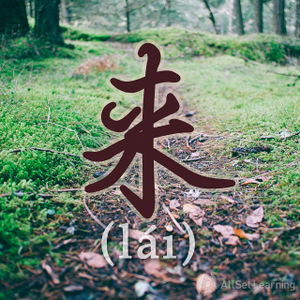Difference between revisions of "Advanced uses of direction complement "-qilai""
| Line 21: | Line 21: | ||
起来 can also be used to show that an action or state has started and is ongoing: | 起来 can also be used to show that an action or state has started and is ongoing: | ||
| − | <div class ="liju"> | + | <div class="liju"> |
Verb + 起来 + 了 | Verb + 起来 + 了 | ||
</div> | </div> | ||
| Line 34: | Line 34: | ||
When used like this, 起来 is only used with spontaneous actions, like 唱, 跳, 讨论, or with states like 热,冷,or 好 etc. It cannot be used with planned actions. | When used like this, 起来 is only used with spontaneous actions, like 唱, 跳, 讨论, or with states like 热,冷,or 好 etc. It cannot be used with planned actions. | ||
| − | + | ||
<div class="liju"> | <div class="liju"> | ||
Revision as of 03:51, 16 October 2012
-
Level
-
Similar to
-
Used for
-
Keywords
We saw in B1 that 起来 (qǐlái), among other things, can be used to express a literal upward movement. 起来 also has some more slightly less intuitive usages, listed below.
Contents
Structure 1
起来 can be used to express collecting things together, where in English we might say "tidy up", or "add up".
Verb + 起来
- 请 把13 和 15 加 起来。
- 宝宝,你 应该 把 你 的 玩具 收拾 起来 。
- 一个 优秀 的 领袖 会 让 他 的 国民 团结 起来。
Structure 2
起来 can also be used to show that an action or state has started and is ongoing:
Verb + 起来 + 了
- 大家 笑 起来 了。
- 两 个 大妈 吵 起来 了。
- 今天 天气 热 起来 了。
- 他的病 好起来了。
When used like this, 起来 is only used with spontaneous actions, like 唱, 跳, 讨论, or with states like 热,冷,or 好 etc. It cannot be used with planned actions.
- 我们 做饭 起来 吧。
- 我们 开始 做饭 吧。
See also
- Result complement "-qilai"
- Figurative directional complements 下去 and 出来
- Direction complement
- Result complements "dao" and "jian"
- Appearance with "kanqilai"
Sources and further reading
Books
- Boya Chinese Elementary Starter 2 (博雅汉语初经起步篇) (pp. 80) →buy
- Chinese Grammar - Broken down into 100 items - Basic and Intermediate Levels (汉语语法百项讲练 - 初中级) (pp. 25-31) →buy
- Integrated Chinese: Level 2, Part 1 (pp. 342-3) →buy
- New Practical Chinese Reader 3 (新实用汉语课本3) (pp. 169) →buy
- New Practical Chinese Reader 5 (新实用汉语课本5) (pp. 134-5) →buy



